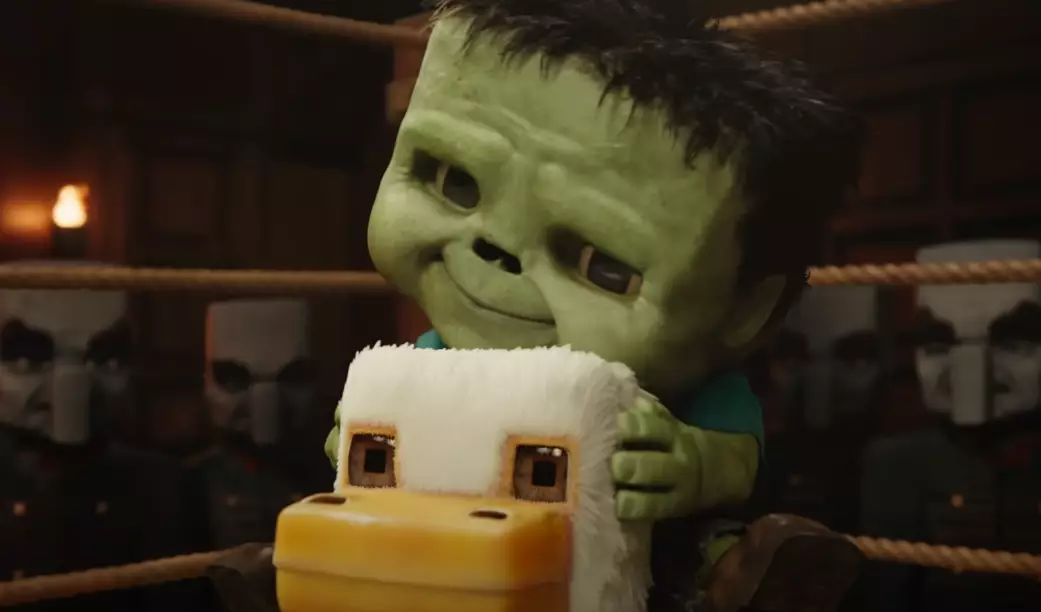The release of “A Minecraft Movie” has sent ripples through both the film industry and the gaming community, largely due to its unexpected engagement with audiences. Jesse Ehrman, head of Warner Bros. film division, recently shared his thoughts about the surprising popularity of the “chicken jockey” phenomenon—the lighthearted creation of a zombie riding a chicken that originated from the intricacies of Minecraft’s gameplay. Ehrman’s candid acknowledgment of the unpredictability inherent in fan culture enriches our understanding of how digital media can transcend mere entertainment; it becomes a shared experience among fans eager for connection.
What has emerged is not just a movie, but a cultural touchstone, and the chicken jockey—once a minor detail in a video game—has found itself at the center of a jubilation that resonated so deeply with audiences that it nearly sparked chaos in theaters. It highlights a unique intersection between gaming and cinema, where elements designed as mere whimsical jokes evolve into phenomena that inspire genuine emotional reactions from fans.
Genuine Engagement vs. Corporate Strategies
Ehrman’s comments also expose a very real tension within corporate strategy in creative industries: the balance between producing content that aligns with fan expectations while also maintaining an authentic experience. He noted, “You want to create a movie that feels fun and authentic to people’s engagement.” This statement resonates in an era where audiences are increasingly tuned in to the nuances of marketing and development. If studios fail to listen to their constituents—the avid gamers who turn into just as passionate moviegoers—they risk alienating a loyal fanbase, which becomes all the more relevant given the massive success of “A Minecraft Movie” raking in over $700 million globally.
There’s an innate responsibility accompanying such commercial success—a recognition that echoes the desires of a diversified audience clamoring for more content. The community’s demand for a sequel, a sentiment confirmed by Ehrman, reveals a symbiotic relationship between creators and consumers where each entity influences the other’s trajectory.
Chaos as a Response: The Fan Culture Reinvented
One of the most intriguing aspects of the movie’s success is the enthusiastic and sometimes chaotic response from fans during screenings. Reports of popcorn-throwing and celebrating audiences—even some bringing real chickens to theaters—have drawn attention and laughter from various media outlets. This spontaneous eruption creates a spectacle that brings us closer to acknowledging that fandom today is not merely passive; it is participatory and vibrant, bursting with emotional investment.
Director Jared Hess provided insight into the mayhem when speaking to Entertainment Weekly. He framed the chaos as humorous rather than alarming, despite it sometimes necessitating police involvement. This incident encapsulates a major evolution in fan engagement strategies—it’s a vocal, visually explosive celebration rather than the composed, quiet respect expected in traditional cinema audiences. The need for theaters to issue warnings reflects how fan culture has transformed film-viewing into a communal experience.
Cinematic Success: A Business Case for Sequels
Warner Bros. executives, well aware of the sizeable financial implications, have made it clear that a sequel is on the horizon. The extraordinary box office numbers of “A Minecraft Movie” solidify its platform not only as a financial success but suggest a blueprint for future adaptations of video game franchises. Ehrman noted, “We’d be foolish not to,” implying an industry expectation to cater to fan enthusiasm—an approach that respects both the source material and the audience’s connection to it.
With “A Minecraft Movie” now standing as the second highest-grossing video game film, trailing only behind “The Super Mario Bros. Movie,” it successfully blurs the lines between gaming and traditional storytelling mediums, inspiring other franchises to rethink their cinematic ambitions with similar vigor.
The Call for Innovation in Narrative
The overwhelming fanfare surrounding elements like the chicken jockey in “A Minecraft Movie” highlights a broader narrative possibility within film adaptations of video games. Rather than merely retelling a game story, filmmakers have the opportunity to weave in unique cultural threads that gamers have created over time, perhaps even something as whimsical as the chicken jockey becoming central to the plot.
In doing so, the charm of such adaptations elevates viewing experiences by merging game lore with innovative storytelling. As we observe the industry responding to fanbase demands, there lies a creative responsibility to dive deeper into character-driven narratives, and explore how elements that emerge organically in gaming can be adapted into screens—ensuring that future sequels maintain authenticity while also embracing the unpredictable joy fans bring to these shared experiences.

